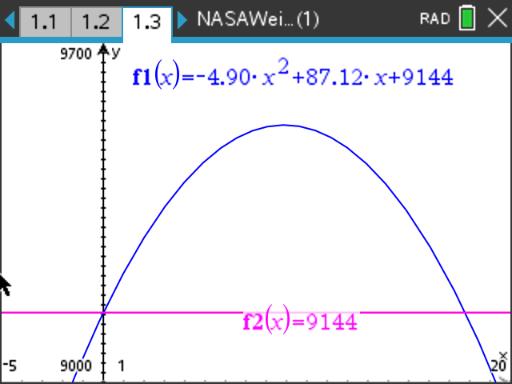NASA - Weightless Wonder

NASA - Weightless Wonder
In this activity, students explore quadratic functions through the real-world example of weightless flight and the gravitational pull of the earth on objects in orbit.
Students will
- solve quadratic equations and evaluate and graph quadratic functions
- find the maximum, the y-intercept, the x-intercepts, and interpret their significance
- determine the effects of parameter changes on the graph of an quadratic equation.
When astronauts are in orbit, either in the space shuttle or on the International Space Station, they are still affected by Earth’s gravitational force. However, astronauts maintain a feeling of weightlessness, since both the vehicle and crew members are in a constant state of free-fall. Even though they are falling towards the Earth, they are traveling fast enough around the Earth to stay in orbit. During orbit, the gravitational force on the astronauts relative to the vehicle is close to zero-g.
By using the C-9 jet as a reduced gravity research laboratory, astronauts can simulate different stages of spaceflight. This can allow crew members to practice what might occur during a real mission. These reduced gravity flights provide the capability for the development and verification of space hardware, scientific experiments, and other types of research (Figure 2). NASA scientists can also use these flights for crew training, including exercising in reduced gravity, administering medical care, performing experiments, and many other aspects of spaceflight that will be necessary for an exploration mission. A flight on the C-9 jet is the next best thing to blasting into orbit!
Vernier EasyData,Vernier EasyLink and Vernier EasyTemp are registered trademarks of Vernier Science Education.

